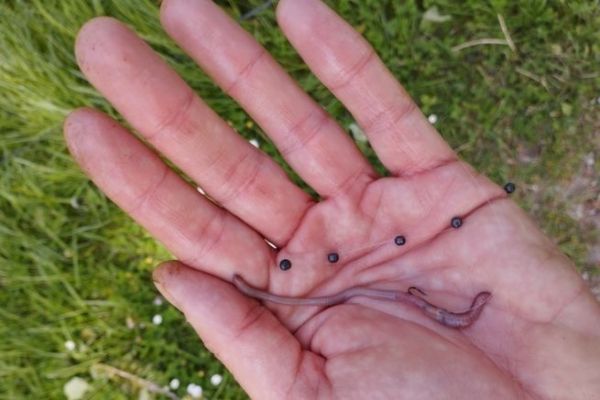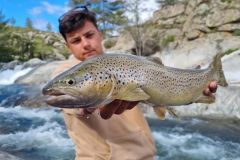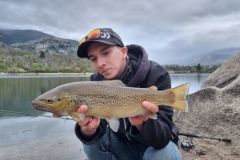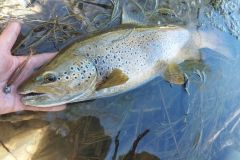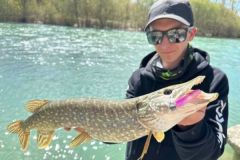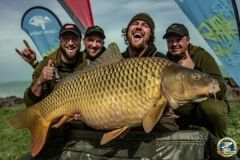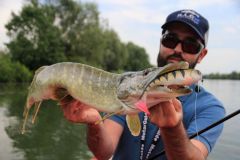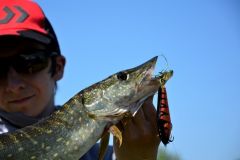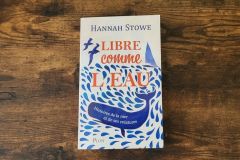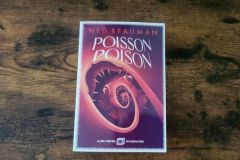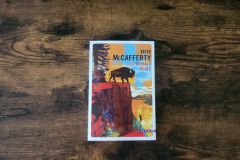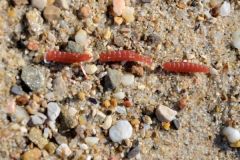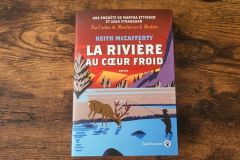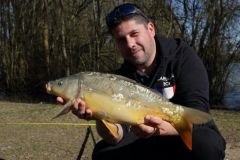The earthworm is probably the most popular bait for fishing, catching most freshwater fish. From gudgeon and catfish to whitefish and salmonids.
The use of worms in the nineteenth century
In 1830, C. Kresz Ainé publishes L he French fisherman reprinted several times by Marabout. In this general book on fishing, the author talks about worms in general: "Worms of all kinds are the best bait [...] Those commonly known as maggots, and those of the earthworm species called achées, and sometimes aiches, from which fishermen have made the word aicher, which means for them, to bait."
1875, René Liesel in writing Line and net fishing treaty and gives his method for ensuring that the worm attracts a maximum number of fish and holds well on the hook: "Put the point of the hook into the body of the worm half a centimetre from the head...". However, he claims that the hook is effective.
In 1881: Fishing on all lines from John Fisher gives a general view of fishing. Here, the author makes it clear from the outset that the other name given to this bait is aiche, "hence the verb aicher", he adds. It is, he says, "an excellent bait mainly for fishing eels, and large day and ground fish: trout, perch, bream, etc." He invites readers to use a 4 or 5 hook to catch the fish seen above. Then comes the moment of baiting: "[...] You have to get the point in about a centimetre below the head, because if you hurt the head, the worm will quickly perish. This must be avoided. The hook is then lowered into the body of the worm to within two centimetres of the tail, which is left free [...]" This method of putting the worm on the end of the hook will certainly evolve, as we shall see, particularly among trout fishermen. There is no consensus on how the worm should be threaded onto the hook.
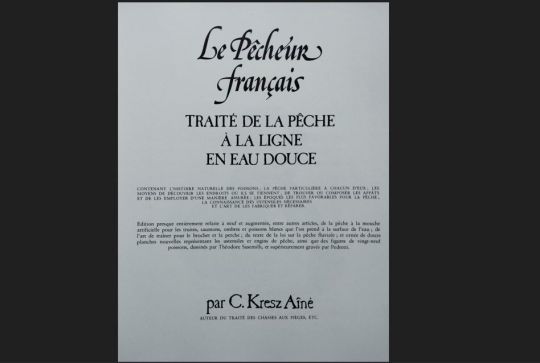
Worm fishing in the twentieth century, the case of trout
If there's one fishery where the worm is used, it's trout fishing. One hundred years on, let's take a look at the books written for trout anglers.
In 1928, Léon Foch a schoolteacher from the Comminge region and an excellent Pyrenean toc fisherman, wrote the famous The art of trout fishing which inspired many of his disciples. Here is his point of view. In his chapter entitled "Baits", he refers to the voracity of trout, which can be lured with a variety of baits "[...] You can fish with any bait: earthworms, wood holders (cuquet), small salad slugs, caterpillars, black leeches, crickets, grasshoppers, flies, etc. But the most practical and deadliest bait for trout is the maggot". But the most practical and deadly of all trout baits is the maggot." No ambiguity here, the worm is not the best of baits for trout, contrary to what we may have read previously.
More later, Pierre Lacouche who is a leading figure in casting and trout fishing at the Bornemann publishing house, gives some details in his opus The trout and its secrets published in 1959. Like Foch, he is not a specialist in baiting, but in all the techniques used to catch salmonids in our streams and rivers. In this case, there is no chapter dedicated to all baits, but a chapter that Lacouche has named: "Fishing for trout with worms and jigs". Here's what he writes: "This is a rather special method of prospecting trout beds when trout are sulking and deserting hunting stations." Here, he describes that "this type of fishing is excellent in both clear and murky waters". He also points out that this jigging motion is very deadly. Is it still deadly today? The question arises, as trout seem far more wary.
In 1977, Léon Foch was emulated by another Comminge legend who revealed his fishing strategies: Jean Lamoure . His book, Whitewater trout has been reprinted many times, demonstrating the impact it has had on salmo trutta fario anglers. Although the earthworm is the first of the baits he describes, it is not, in his opinion, the most effective, as a large section is devoted, like Foch, to the maggot. The only details are about choosing earthworms and a few indications about the diameter of the nylon to choose, as well as the hooks: "hook n° 7 or 8 for a diameter of 14/100". Today, maggot fishing is authorized in some Pyrenean rivers, but banned in many first-category rivers in France.
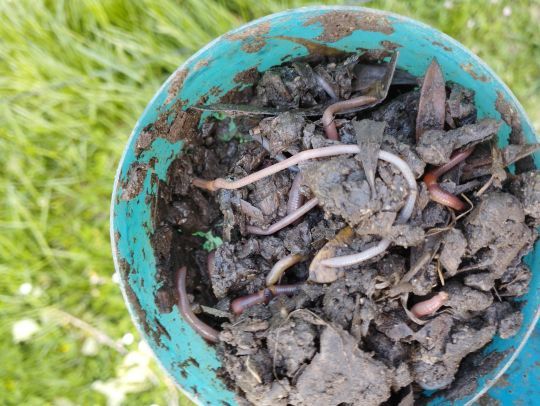
Five years later, in 1982, the Communist MP Fernand Dupuy he's not one to mince his words. He has no tongue in cheek, and at a time when some people were differentiating between sport fishing and others, he explains: "But let's leave these vain quarrels aside, and too bad if writing that I hold earthworm trout fishing to be the queen of trout fishing, I come across as a miscreant." Further on, he points out that there is "a wide variety of earthworms. One hundred and seventy species have been listed. [...] At the opening, the beautiful earthworm is my favorite bait because it's the most effective; it's also effective at the end of the season. On the other hand, in June, July and August, the little pink worm and the zebra dung worm give very good results; which is to say that I fish for trout with earthworms practically from opening to closing."
Alphonse Arias another well-known figure in the world of trout fishing, has written two books for trout anglers: The Arias guide to real trout fishing (1988) and Trout: all my natural bait techniques (2008).
Let's take a closer look at the 1988 opus. It's hard to tell in this article all the contents of this very interesting book, however, he does explain that it's "a very good early-season bait. I prefer to use it on blind, tinted or murky water. It works well in clear water Twenty years later, the worm still appears to be an excellent bait: "I think the worm is the king of the opening, but it can be used throughout the season in all waters and all weathers. Of course, it's best suited to strong or tinted waters since nature brings them to the trout menu." Alphonse Arias is a rather open-minded angler and doesn't hesitate to talk about fishing for farmed trout, which are fairly common in our waters, in which case he explains how the worm can prove to be a real magnet: "You thread them in by the head and then make them follow the shape of the hook, bringing them out at barb level. The worm is cut a centimetre from the hook So this set-up is the opposite of the one he favours for wild trout. In the case of farmed trout, the aim is to make the worm turn on itself to attract them and get them to bite. It's clear that the fisherman from Comminge is adapting to the new challenges of fishing in our waters.
Worm trout fishing in the 21st century
Whether we like it or not, worm fishing hasn't disappeared. This rather popular form of fishing is still very much in vogue, particularly in trout fishing, although it is now competing with lure and nymph fishing. Here are a few words from the authors.
2009 saw the publication of two titles devoted to toc: Toc toc. Trout fishing with toc from Philippe Dours and Pyrenean fishing written by Robert Menquet .
Robert Menquet is a child of the Pyrenees, and has worked with some of the biggest names in the sport: Arias, Lamoure, Soueix, Foch, Ducos. He speaks of the Pyrenees as the cradle of fishing. Let's see what he has to say about the worm. He explains that he has tried all possible baits, but in his opinion, the only one that is the most effective is the worm: "However, if I had to choose just one type of bait to use all year round, I would opt for the worm. One of my former masters had explained this to me several times. [...] "Kid, if you're only going to fish with one bait, use the worm, it's the best for practice everywhere and in all weathers Robert Menquet is no stranger to reading up on worms, and writes that he has consulted a document dedicated to this invertebrate: "I recommend that those interested read the remarkable work : French earthworms, ecology and systematics from B. Bouché . It can be found at INRA, in the Annales de zoologie écologie animale of 1972. The author shows here that he takes a close interest in the baits he uses.
Philippe Dours is equally loquacious on the subject of earthworms. In a three-and-a-half-page chapter, he discusses this invertebrate, but says: "The use of worms, like any other bait, is dictated by the state of the river and the regulations, which are increasingly prohibiting maggots. The time of year you fish is also important. The beginning of the season, with its high flows, and rivers at the beginning or end of flooding, when the water is beginning or ending to be tinted, remain the most favourable periods for its use."
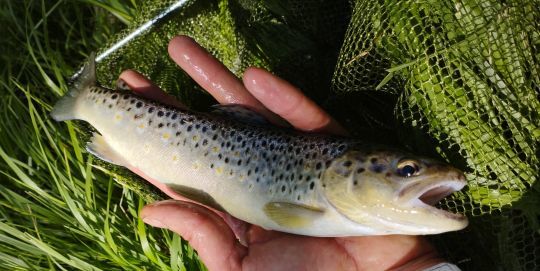
The use of earthworms has evolved since the end of the 19th century. Not all authors agree that this bait can be used all year round, nor do they agree on how to bait it. We can see that a bait can be treated differently from one era to another. However, the earthworm remains a bait of choice that is highly effective all year round on trout, but also on other fish.
